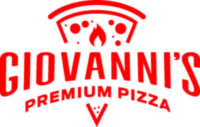Pizza is more than a universal comfort food—it’s a thriving business ecosystem and a fascinating case study in economics. Whether you’re an entrepreneur, economist, or pizza lover, the concept of pizza economics provides valuable insights into supply chains, labor markets, pricing strategies, and consumer behavior.
In this blog, we’ll explore the multifaceted world of pizza economics, diving into the financial considerations that make this $150 billion global industry so deliciously profitable.
The Global Pizza Market: A Slice of the Economy
Pizza is big business. As of recent years, the global pizza market has grown consistently, with revenue projections exceeding $200 billion by the end of the decade. But what drives this growth? The answer lies in pizza’s universal appeal, affordable price points, and adaptability across cultures.
Key Players in Pizza Economics
- Independent Pizzerias: Local establishments thrive on customization and community ties.
- Global Chains: Brands like Domino’s, Pizza Hut, and Papa John’s dominate through standardized recipes, economies of scale, and technological innovations.
- Frozen Pizza: A lucrative segment catering to convenience-focused consumers, adding another layer to pizza economics.
Each of these sectors plays a role in shaping the industry, with competition and consumer preferences constantly influencing market dynamics.
The Economics of Ingredients: From Dough to Dollars
Behind every pizza is a delicate balance of costs and quality. The ingredients—flour, cheese, tomato sauce, and toppings—are the building blocks of the pizza economy.
The Supply Chain Challenge
A closer look at pizza economics reveals the complex supply chain that ensures fresh, high-quality ingredients reach pizzerias. For instance:
- Flour and Dough: Price fluctuations in wheat due to weather, geopolitics, and trade policies impact flour costs.
- Cheese: Cheese prices are influenced by dairy production cycles, international trade, and tariffs.
- Tomato Sauce: Seasonality and farming conditions dictate the availability and cost of tomatoes.
- Toppings: Premium toppings like truffles or prosciutto significantly raise a pizza’s price, while common toppings like pepperoni benefit from mass production.
Supply chain efficiency is crucial. Many pizza businesses streamline their processes by partnering with suppliers who provide bulk discounts or by investing in vertical integration to control production costs.
Labor and Logistics in the Pizza Business
One of the most fascinating aspects of pizza economics is the reliance on labor and delivery networks. Both areas come with unique financial challenges.
Labor Costs and Automation
Labor costs represent a significant expense for pizzerias. From chefs and kitchen staff to delivery drivers, a successful operation requires skilled personnel. However, rising minimum wages and staff shortages have led many businesses to embrace automation:
- Automated Ovens: Machines that streamline baking.
- AI Order Management: Reducing errors and improving efficiency.
- Robotic Delivery: A burgeoning field that could revolutionize last-mile delivery.
Delivery Economics
The rise of food delivery apps like DoorDash, Uber Eats, and Grubhub has reshaped the pizza industry. While these platforms provide exposure to a larger customer base, they charge commission fees—often 15–30%—that cut into profits.
To mitigate these fees, some businesses invest in their own delivery fleets, while others incentivize in-store pickup. The interplay between convenience and cost is a cornerstone of pizza economics.
Pricing Strategies: Finding the Perfect Slice of Profit
Setting the right price for pizza involves a fine balance of covering costs, maintaining competitiveness, and satisfying customer expectations.
Cost-Plus Pricing
Most pizzerias use cost-plus pricing, adding a markup to the base cost of ingredients and labor. For example, if a pizza costs $5 to make, a restaurant might sell it for $10–$15, depending on the local market.
Premium Pricing
Upscale pizzerias often charge higher prices by emphasizing gourmet ingredients and artisanal techniques. The perception of quality allows these establishments to target affluent customers willing to pay a premium.
Value Deals and Promotions
Global chains rely heavily on promotional offers—such as “buy one, get one free” or discounted bundles—to drive volume sales. While these deals reduce margins, they foster customer loyalty and increase market share.
Consumer Behavior: Why We Love Pizza
Pizza’s enduring popularity is rooted in psychology, convenience, and cultural relevance. Understanding consumer preferences is essential to mastering pizza economics.
Cravings and Comfort
Pizza is scientifically engineered to be irresistible. The combination of cheese, dough, and toppings triggers dopamine responses in the brain, making it a go-to comfort food.
Customization
From crust thickness to topping selection, pizza’s versatility appeals to a broad range of tastes and dietary preferences. This customization contributes to its global appeal.
Cultural Adaptations
Around the world, pizza takes on unique forms—whether it’s sushi pizza in Japan, paneer tikka pizza in India, or Nutella pizza in Italy. These adaptations showcase how pizza economics intersects with cultural trends, allowing businesses to tap into diverse markets.
The Rise of Tech in Pizza Economics
Technology has revolutionized every aspect of the pizza industry, from online ordering to delivery tracking. Businesses that leverage technology effectively gain a competitive edge.
Online Ordering Systems
The shift to digital ordering platforms has transformed pizza sales. Apps and websites enable customers to place orders quickly, customize their pizzas, and track deliveries in real-time.
Predictive Analytics
Using data to predict demand patterns allows pizzerias to optimize inventory, reduce waste, and schedule staff efficiently. This proactive approach is a game-changer in pizza economics.
Ghost Kitchens
The emergence of ghost kitchens—delivery-only kitchens without dine-in facilities—has opened new avenues for pizza businesses. These low-overhead operations cater to the booming demand for delivery and offer a more agile business model.
Sustainability in Pizza Economics
As consumers grow increasingly eco-conscious, sustainability has become a critical component of pizza economics. Businesses that adopt green practices not only reduce costs but also enhance their brand image.
Sustainable Sourcing
Pizzerias are prioritizing ingredients sourced from local, organic, or ethical suppliers. While these practices can increase costs initially, they often attract environmentally conscious customers.
Reducing Food Waste
Innovative solutions like composting, portion control, and dynamic pricing for surplus inventory help reduce waste and maximize profits.
Packaging Innovations
With delivery on the rise, eco-friendly packaging is gaining traction. Biodegradable boxes and reusable containers appeal to consumers seeking sustainable options.
Lessons from Pizza Economics for Entrepreneurs
Pizza economics offers valuable lessons for business owners in any industry. Here are some takeaways:
- Adaptability: Embrace cultural trends and consumer preferences to stay relevant.
- Efficiency: Streamline supply chains and reduce costs without sacrificing quality.
- Innovation: Leverage technology to enhance customer experience and operational efficiency.
- Sustainability: Adopt green practices to align with shifting consumer values.
The Future of Pizza Economics
As we look ahead, the pizza industry is poised for continued growth and innovation. Emerging trends include plant-based toppings, healthier crust options, and the integration of AI in both operations and marketing.
The pandemic accelerated the shift toward delivery and takeout, trends that are likely to endure. Meanwhile, global chains are expanding into untapped markets, bringing pizza economics to new frontiers.
Conclusion
Pizza is much more than a beloved meal—it’s a lens through which we can explore supply chains, pricing strategies, consumer behavior, and technological advancements. The principles of pizza economics extend far beyond the food industry, offering insights into how businesses can thrive in competitive and ever-changing markets.
Whether you’re savoring a slice of New York-style pizza or experimenting with a cauliflower crust creation, remember: every bite is a testament to the intricate economics that fuel this global phenomenon.

